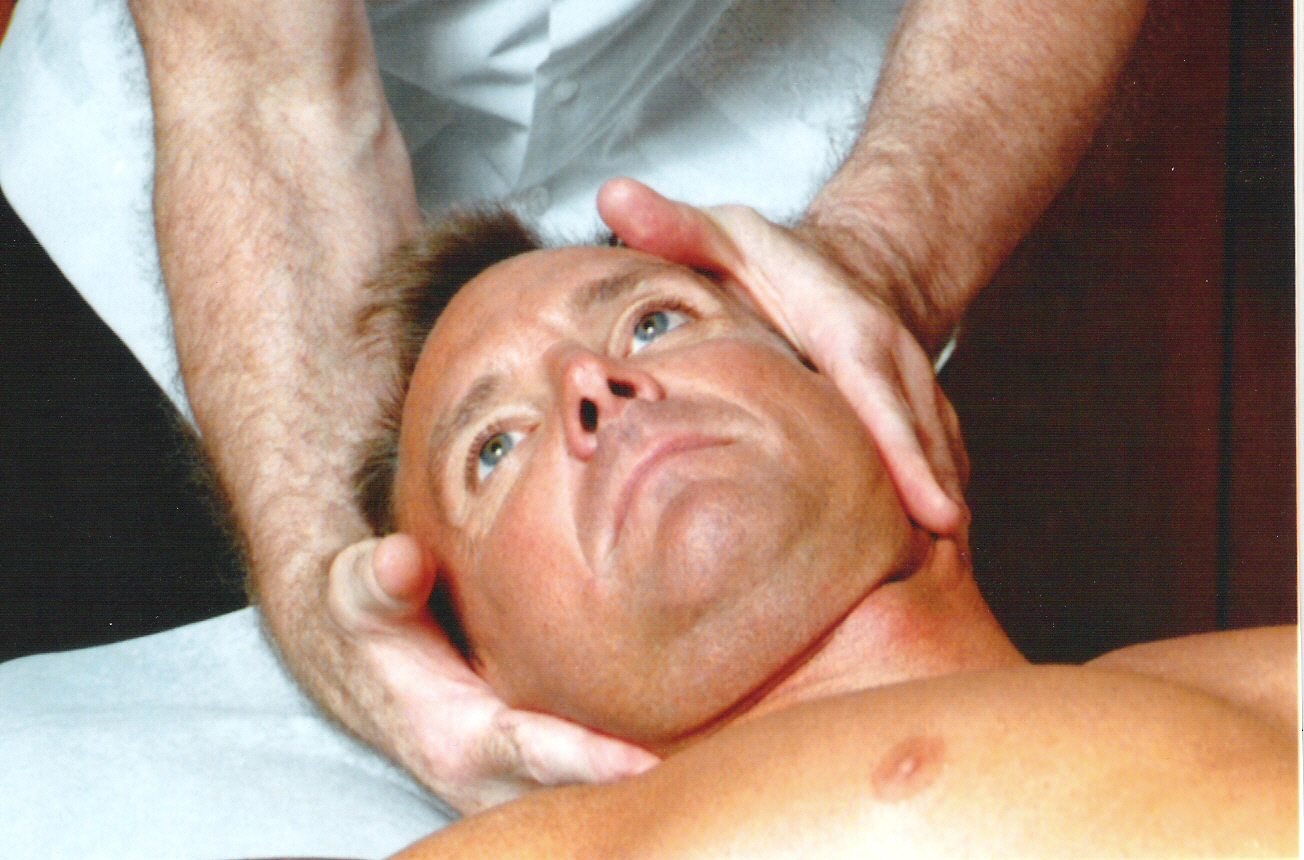
Head rotation that forces extreme rotation of the occipital-atlanto-axial joints stretches vertebral and internal carotid arteries. (Photo by Homola. Model: George Fleming.)
Author Note: It’s Sunday and Hurricane Irma is headed my way. I am finalizing this post in anticipation of almost certain loss of power later today and for an unknowable number of days ahead, hence the brevity.
Wednesday Update: We were fortunate to have been spared the worst of the storm in Tallahassee. Everything is up and running here after internet outages only. However, I stuck with my original post. A hurricane is enough to handle in one week.
Yet another study adds to the growing body of evidence that neck manipulation is an independent risk factor for cervical arterial dissection and stroke. The authors conclude:
Based on our findings, all patients who visited chiropractors for cervical spine manipulation should be informed of the potential risks and of the need to seek immediate medical assistance should symptoms suggestive of dissection or stroke occur during or after manipulation.
In fact, they suggest that patients might well avoid chiropractors altogether:
Until the actual level of risk from chiropractic manipulation is known, patients with neck pain may be better served by equally effective passive physical therapy exercise.
We’ve covered the risk of chiropractic neck manipulation many times here on SBM, including the refusal of the chiropractic profession to admit that there is a problem and their resistance to properly informing patients of the risks. Recently, retired chiropractor Sam Homola posted an excellent review of the subject. This new study, published in the September issue of The Journal of Family Practice, adds to the existing body of evidence that chiropractic neck manipulation is an independent risk factor for stroke and that patients should be warned of the risks.
The authors set out to determine the frequency of patients seen at a University of Illinois College of Medicine-affiliated medical center who were diagnosed with a cervical artery dissection related to chiropractic neck manipulation. They searched the medical records for patients with a confirmed diagnosis of cervical artery dissection over a four-year period and found 141. Through further research, including patient interviews, they found 12 patients (or 8.5%) with a verifiable temporal association between chiropractic manipulation and dissection. (The association was equivocal for three more patients who were excluded from further consideration in the study.)
The patients, whose average age was 35, suffered a total of 16 dissections comprising 14 vertebral artery (VAD) and 2 carotid artery (CAD) dissections. Most developed symptoms immediately after manipulation although, for two patients, it was 2-3 days later. Unfortunately, one patient who suffered immediate symptoms did not seek medical attention for several weeks and died, tragically demonstrating the importance of warning patients they need to get help right away if they experience symptoms such as visual deficits, vertigo, numbness, and new neck pain. While one patient fully recovered, others still suffer from visual problems, disequilibrium, arm and leg weakness and pain. One walks with a cane and had to stop driving.
Acute or chronic neck pain was the most common reason for going to the chiropractor. Headaches were another reason, including migraines. Two patients were seeing a chiropractor for the first time. One saw a chiropractor once a month for 15 years. Another, once a week for 10 years.
The authors cite a 2012 study finding that chiropractic manipulation is beneficial in the treatment of acute neck pain but also found no significant difference in effectiveness between manipulation and physical therapy exercises. They do not discuss the lack of evidence of effectiveness for chronic neck pain, headaches, or the fact that chiropractors manipulate the cervical spine for all manner of conditions that have nothing to do with the neck. Some manipulate the neck exclusively, for anything.
A review of the evidence of association between neck manipulation and cervical artery dissection takes particular aim at research dismissing a connection, including the Cassidy study (also dissected by our own Mark Crislip). That study showed an association between vertebrobasilar stroke and both chiropractic visits and visits to primary care physicians within a month prior to the stroke. Chiropractors use the study to claim that neck manipulation by a chiropractor poses no more risk of stroke than seeing your PCP. The authors find this claim
hard to reconcile with other studies, including our own, in which 10 patients developed new symptoms immediately with chiropractic manipulation of their cervical spines.
They criticize the one-month observation period of the Cassidy study as “perhaps . . . excessive”:
Many post-manipulation events occur within hours or at most a few days, as would be expected given the hypothesized pathogenic mechanism. Perhaps if they had shortened their interval of study to the preceding 3 days, their findings may have been different.
They make the same point in discussing a systematic review and meta-analysis demonstrating a slight association between neck manipulation and dissection but concluding there is no convincing evidence of causation. While agreeing that the quality of the literature is low, they point to the immediate onset of acute symptoms in their own study.
As this article notes, others have come to conclusions different from that of the chiropractors.
- A 2003 study found manipulation to be an independent and strong risk factor for VAD, the authors concluding the relationship was causal.
- The Canadian Stroke Consortium showed a 28% incidence of chiropractic manipulation in cases of CAD.
- The American Heart Association/American Stroke Association (endorsed by the American Association of Neurological Surgeons and the Congress of Neurological Surgeons) recommends that chiropractors inform patients of the association between cervical artery dissection.
- An institution similar to the one in this study previously described 13 cases in which patients experienced dissection related to chiropractic neck manipulation, one of whom died.
These findings, they say, if representative of other institutions,
indicate the incidence of stroke secondary to chiropractic manipulation may be higher than supposed.
In sum, given the low level of evidence of effectiveness of chiropractic cervical manipulation and the availability of other, equally effective, remedies, there is no reason to run the risk of potentially catastrophic results. At the very least, patients should be warned of the lack of benefit and the risks and allowed to make their own decision.

